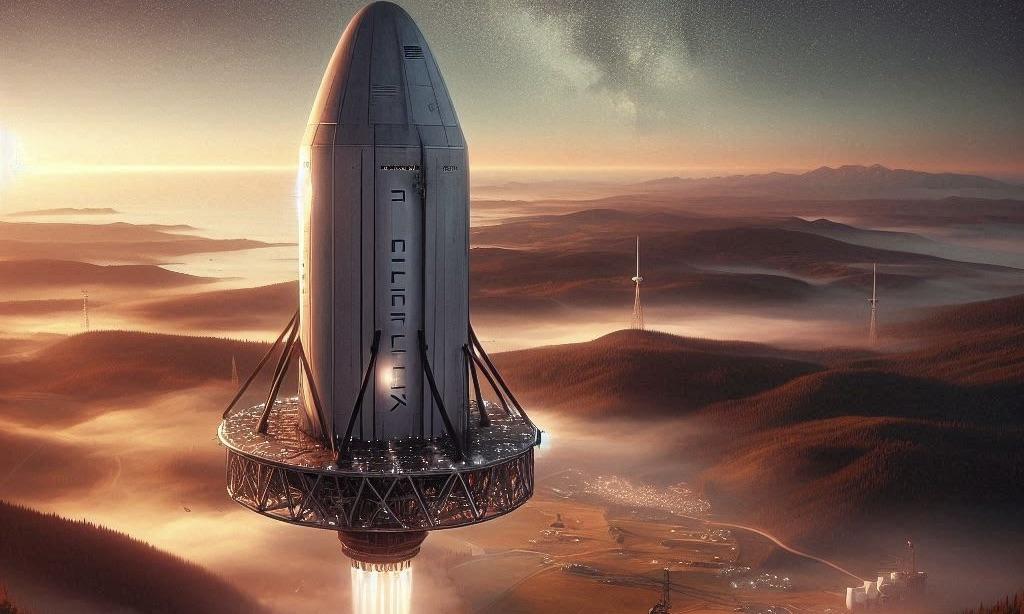SpaceX is testing its launch tower arms in preparation for a risky attempt to capture the Super Heavy booster during Starship Flight 5. As the company awaits FAA approval, the success of this maneuver could mark a significant milestone in reusable rocket technology.
SpaceX Tests Tower Arms for First-Ever Super Heavy Booster Capture Ahead of Starship Flight 5
SpaceX is currently conducting tests on its launch pad and tower arms to attempt to capture the 232-foot-tall Super Heavy rocket booster after Flight 5. At the same time, it awaits the approval of the Federal Aviation Administration (FAA) for its flight profile for the fifth Starship test. The risky tower capture will be attempted for the first time during the upcoming Starship test. SpaceX's most recent Starship update, released earlier this month, indicated that the company would continue to refine this procedure during the period the FAA takes to evaluate its Starship Flight 5 test application.
In June, SpaceX initiated testing the launch tower's arms for a booster capture by transporting a portion of a rocket booster to the pad. During these tests, the cylinder's sides were repeatedly struck by the tower arms, also called chopsticks, as teams attempted to replicate a successful capture. According to local media footage, one of the tower limbs was replaced following this test, and testing slowed as SpaceX redirected its attention to the second stage, Starship.
SpaceX has resumed testing the tower arms for the risky catch attempt, awaiting the FAA's authorization for Starship Flight 5. It transported the booster piece to the pad earlier this week, and a test was conducted with the arms. Subsequently, it was removed from the tower and returned to the production and assembly facilities on August 17.
SpaceX Tests Critical Tower Arm Movements as Starship Flight 5 Approaches Key Milestones
As evidenced by footage from local media, the tower arms were tested at least six times during the most recent session. Several replicated the test while they were elevated above the booster piece, and other tests involved the arms circling the cylinder as closely as possible without causing any damage.
The rocket's second stage has experienced numerous static flames as it approaches the fifth Starship test, which is expected at the end of this month or early September. Despite having flown the complete stack four times, SpaceX has yet to exhibit an in-orbit engine ignition with the second stage. According to Wccftech, this critical test could also occur during Starship Flight 5. If both the engine ignition and the tower catch are successful, SpaceX will have completed numerous milestones in its rocket development.
During the most recent tower capture tests, SpaceX also evaluated the vertical motion of the arms, which were allowed to move up and down. At the same time, the booster part was positioned between them. During specific test trials that involved the arms closing around the rocket piece, both arms moved simultaneously, while in others, only one arm approached the cylinder.
The successful execution of a gentle splashdown in the water by the Super Heavy booster and the second stage ship during Starship Flight 4 is a promising development. This implies that SpaceX can return the second stage to the launch site after Flight 6 if the spacecraft replicates this behavior during Flight 5. The second stage, the world's first rocket intended to be completely reusable, holds the potential to revolutionize space travel. This is a significant component of SpaceX's effort to significantly reduce the cost of launch and increase the speed of consecutive launches, bringing us one step closer to the dream of colonizing Mars.



 Intel Unveils Panther Lake AI Laptop Chips at CES 2025, Marking Major 18A Manufacturing Milestone
Intel Unveils Panther Lake AI Laptop Chips at CES 2025, Marking Major 18A Manufacturing Milestone  Elon Musk Says X Will Open-Source Its Algorithm Amid EU Scrutiny
Elon Musk Says X Will Open-Source Its Algorithm Amid EU Scrutiny  Is space worth the cost? Accounting experts say its value can’t be found in spreadsheets
Is space worth the cost? Accounting experts say its value can’t be found in spreadsheets  Neuralink Expands Brain Implant Trials with 12 Global Patients
Neuralink Expands Brain Implant Trials with 12 Global Patients  Baidu’s AI Chip Unit Kunlunxin Prepares for Hong Kong IPO to Raise Up to $2 Billion
Baidu’s AI Chip Unit Kunlunxin Prepares for Hong Kong IPO to Raise Up to $2 Billion  Supreme Court to Hear Cisco Appeal on Alien Tort Statute and Human Rights Liability
Supreme Court to Hear Cisco Appeal on Alien Tort Statute and Human Rights Liability  Blue Origin’s New Glenn Achieves Breakthrough Success With First NASA Mission
Blue Origin’s New Glenn Achieves Breakthrough Success With First NASA Mission  BTIG Initiates Buy on SoftBank as AI and Robotics Strategy Gains Momentum
BTIG Initiates Buy on SoftBank as AI and Robotics Strategy Gains Momentum  Hyundai Motor Shares Surge on Nvidia Partnership Speculation
Hyundai Motor Shares Surge on Nvidia Partnership Speculation  NASA Partners with Katalyst to Save Swift Observatory with Innovative Docking Mission
NASA Partners with Katalyst to Save Swift Observatory with Innovative Docking Mission  OpenAI Sets $50 Billion Stock Grant Pool, Boosting Employee Equity and Valuation Outlook
OpenAI Sets $50 Billion Stock Grant Pool, Boosting Employee Equity and Valuation Outlook  BESI Reports Strong Q4-25 Orders Surge Driven by Data Center and Hybrid Bonding Demand
BESI Reports Strong Q4-25 Orders Surge Driven by Data Center and Hybrid Bonding Demand  FDA Limits Regulation of Wearable Devices and Wellness Software, Boosting Health Tech Industry
FDA Limits Regulation of Wearable Devices and Wellness Software, Boosting Health Tech Industry  NASA Astronauts Wilmore and Williams Recover After Boeing Starliner Delay
NASA Astronauts Wilmore and Williams Recover After Boeing Starliner Delay  China Reviews Meta’s $2 Billion AI Deal With Manus Amid Technology Control Concerns
China Reviews Meta’s $2 Billion AI Deal With Manus Amid Technology Control Concerns  Discord Confidentially Files for U.S. IPO, Signaling Major Milestone
Discord Confidentially Files for U.S. IPO, Signaling Major Milestone 































